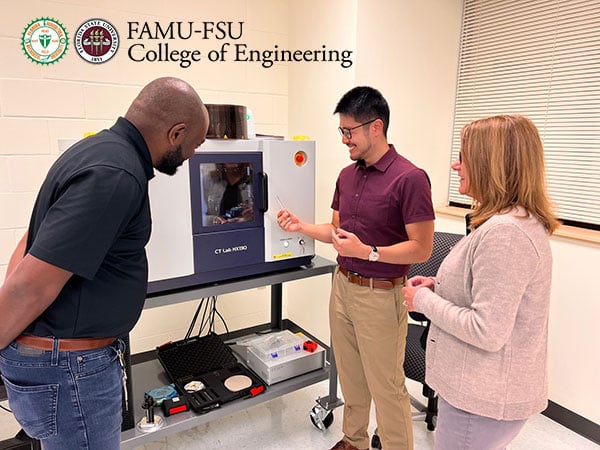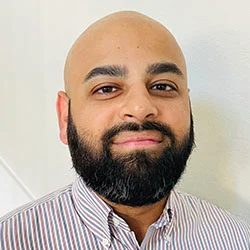Securing National Funding for Your Micro-CT Scanner: How to Overcome Initial Rejection and Ensuring Success
On average, the National Science Foundation (NSF) proposal success rate is between 26%-28% over the past few years. Are you part of the 70%+ that have been rejected? If you are an Assistant Professor, Research Scientist, or Graduate Student, applying for a scientific equipment grant is something you deal with regularly.
Not all academic and government equipment grants are the same. Each proposal brings unique challenges, and the National Science Foundation Major Research Instrumentation (MRI) program is no different. X-ray micro-computed tomography (micro-CT) is considered capital and essential research equipment, and many researchers rely on NSF’s MRI program to secure funding by getting their proposals approved.
Do not give up if your initial proposal gets rejected. I have worked with many researchers in helping them secure their funding. In this article, I will share what I observed that people did to overcome the initial rejection and successfully secure funding for your proposal.
Understand the Reasons for Initial Rejection
 Facing rejection can be a discouraging experience, but it can also serve as an opportunity to learn and improve. Rigaku customer, Dr. Tarik Dickens, Ph.D., Assistant Professor at the Department of Industrial and Manufacturing Engineering at Florida A&M University, did not find success initially. “It was our third submission that went through…we thought we had a good proposal…currently there aren’t any HBCUs that had a micro-CT system but some of the technical aspects of the proposal were lacking, and we got quite a bit of feedback where we could focus on...”
Facing rejection can be a discouraging experience, but it can also serve as an opportunity to learn and improve. Rigaku customer, Dr. Tarik Dickens, Ph.D., Assistant Professor at the Department of Industrial and Manufacturing Engineering at Florida A&M University, did not find success initially. “It was our third submission that went through…we thought we had a good proposal…currently there aren’t any HBCUs that had a micro-CT system but some of the technical aspects of the proposal were lacking, and we got quite a bit of feedback where we could focus on...”
The initial step in re-submitting your proposal involves reviewing NSF/MRI panel feedback to pinpoint weaknesses and enhance it. This feedback guides improvements by addressing deficiencies and strengthening the proposal in these key areas:
Ensuring Clarity and Specificity
Leveraging Network and Collaboration
Demonstrating Cost-Effectiveness
Understanding these shortcomings is crucial to making the necessary refinements to your proposal. By carefully considering the panel's comments, you can develop a more impactful proposition and increase your chances of success in future submissions.
Ensuring Clarity and Specificity

Once you've analyzed the feedback to understand the concerns raised by the review panel, your next steps will be to revise and strengthen your proposal by being very clear and specific towards the given feedback.
Dr. Tarik decided to address his lack of technical details by starting his second proposal from scratch. In his second proposal, he explicitly made sure to list the specifications of the ideal instrument for his laboratory, application requirements for his samples, and additional in-situ attachments relevant to his research. This approach allowed him to address the lack of clarity and clearly outline the objectives and research questions that the micro-CT system would address.
Similarly, by utilizing the panel's feedback to revise your proposal, you can effectively communicate the potential scientific advancements and the impact of acquiring this equipment. Articulate how it will contribute to the progress of your field and the broader community in a manner that aligns with the panel's comprehension, thereby enhancing your chances of success.
Considering Feasibility
Partnering with vendors that manufacture micro-CT instruments can be beneficial in your application for funding. Vendors can provide you with feasibility studies and expert guidance on how their solutions can be tailored to your research objectives. This enables you to identify the necessary tools and techniques for your project, ensuring technical precision and enhancing its feasibility, efficiency, and effectiveness. A reputable professor, who has requested anonymity in their consideration for funding, recommends collaborating with vendors to visualize sample results on a preferred micro-CT system.
Following the initial rejection, the professor consulted their preferred micro-CT vendor to validate the instrument's feasibility for their project requirements. They also emphasize demonstrating a comprehensive understanding of the system’s configuration and software integration. Additionally, a vendor's lab visit to assess space and installation requirements instills confidence in choosing a system that perfectly aligns with the feasibility of your research needs.
Defining Strong Justification

Successfully securing NSF/MRI funding for your micro-CT system requires you to produce a convincing rationale. To enhance your proposal, clarify the significant advancements that a micro-CT instrument will drive within the scientific community, both internally in your organization and externally. Stress the critical role the equipment will play in advancing your research and achieving your scientific goals. By highlighting concrete examples of unanswered questions in prior research and demonstrating how the proposed instrument can address them provides compelling evidence of its necessity, further strengthening your proposal.
The aforementioned anonymous professor advises creating a clear plan for the instrument's utilization, encompassing its accessibility to other users, integration into teaching courses, and support for high-level R1 research (very high research activity). This versatility broadens the instrument’s range of applications.
Demonstrating a management plan, after purchasing the instrument, is also important. Dr. Tarik scoured the country and went to several universities to understand how different users manage and operate the micro-CT systems on their campuses. Key aspects he considered included on-campus workshops and seminars, along with the system's integration into a shared facility. These details are favorable in completing the puzzle that shapes your final proposal.
Leveraging Network and Collaboration
 Complex challenges demand diverse perspectives and strategies. To enhance your prospects of securing NSF/MRI funding, solicit feedback from experts and foster cross-disciplinary collaboration. This partnership allows you to bring together collective thoughts and foster innovative solutions to drive significant advancements.
Complex challenges demand diverse perspectives and strategies. To enhance your prospects of securing NSF/MRI funding, solicit feedback from experts and foster cross-disciplinary collaboration. This partnership allows you to bring together collective thoughts and foster innovative solutions to drive significant advancements.
Tap into the expertise of colleagues who have successfully secured funding or individuals who have experience in writing similar proposals. External reviewers can provide fresh perspectives and identify areas of improvement in your proposal. They can also help you refine your research questions, methodology, and budget, to align with NSF requirements and increase your chances of being awarded funding.
Emphasizing the potential for collaboration is highly valued by the review panel. It signifies your commitment to working with the broader scientific community and your willingness to exchange ideas and expertise.
Collaboration with other researchers can diversify funding opportunities and foster knowledge sharing, streamlining work with emerging technologies. It also promotes an exchange of best practices, discoveries, and breakthroughs, leading to efficiencies in time, effort, and resources when working with novel technologies like micro-CT. Dr. Tarik suggests having a group of principal investigators or a core ancillary team contribute to the proposal to support the equipment’s benefits for your research and other applications at your organization or university.
Coordinate brainstorming sessions with colleagues to generate new perspectives for a compelling proposal. Connect with NSF/MRI awardees to understand insights into their grant success. Leveraging your network reinforces your resource justification, boosting your chances of grant approval.
 Dr. Tarik Dickens (left) succeeded in securing his funding in 2023, now working on his new micro CT scanner with Ted Huang (middle) and Angela Criswell (right) from Rigaku at FAMU-FSU.
Dr. Tarik Dickens (left) succeeded in securing his funding in 2023, now working on his new micro CT scanner with Ted Huang (middle) and Angela Criswell (right) from Rigaku at FAMU-FSU.
Highlight Broader Impacts
Broader impacts are a significant evaluation criterion for NSF/MRI proposals. Allow your proposal to showcase how the micro-CT system will benefit students, researchers, and the public. Emphasize its potential to improve educational and outreach activities, fostering scientific literacy and engagement across the board.
Showing examples of micro-CT making impacts in your field and adjacent fields or articulating the importance of educating and training people on the technique is an example of highlighting broader impacts.
Demonstrating Cost-Effectiveness 
Incorporate a plan that demonstrates cost-effectiveness to strengthen your funding prospects. The proposal should prioritize fiscal responsibility by specifying substantial budgets and explaining the significance of each element to your research goals and how these investments contribute to both your objectives and the broader scientific community.
To further highlight your fiscal responsibility, perform a comparative cost analysis by weighing the expenses of the proposed acquisition with those of similar systems in the market or the option of outsourcing the measurements. Highlight unique features such as sample size, image resolution, software compatibility, application versatility, ease of use and vendor provided service & support to justify the chosen equipment as a cost-effective resource. Showing cost-effectiveness in your proposal will increase your credibility and emphasize your commitment to responsible resource allocation in the pursuit of your research.
Conclusion
Securing funding through an NSF/MRI proposal for a micro-CT system is a competitive process, and while rejection is common, it is not impossible to overcome. Take a deep breath, review initial committee feedback, and make revisions based on their suggestions to justify feasibility, broader impacts through industry insights & collaboration, and fiscal responsibility. There is no doubt you can increase your chances of acquiring the micro-CT system to advance your research and contribute to scientific progress because it is hard to reject a proposal that addresses all the shortcomings specified by the panel.
Remember, X-ray CT experts from vendors, such as Rigaku, can be valuable resources. We have supported many academic institutions and industry organizations to justify micro-CT acquisitions. Our experts can review your proposal, make recommendations, and provide valuable resources, including proof of concept and technical specifications, to help your proposal stand out.
If you have any questions or need help with your proposal, our team of CT experts can help you. You can talk to one of our CT experts by clicking the “Talk to an Expert” button at the top right of the page or send us a message at imaging@rigaku.com.



